Table of content
White jade mushrooms (Hypsizygus marmoreus), known for their delicate texture, mild flavor, and striking appearance, are a prized ingredient in culinary traditions worldwide. Their crisp, ivory-colored stems and small, rounded caps make them a versatile addition to soups, stir-fries, and salads. However, like many fresh produce items, white jade mushrooms have a limited shelf life, often lasting only a few days when refrigerated. Drying, a time-tested preservation method, offers an effective solution to extend their longevity while retaining their nutritional value and unique taste. This comprehensive guide explores the science behind drying white jade mushrooms, outlines step-by-step methods for achieving optimal results, and provides actionable tips for storage and rehydration.
Why Dry White Jade Mushrooms?
Drying is a natural preservation technique that removes moisture from food, inhibiting the growth of microorganisms like bacteria, molds, and yeasts. For white jade mushrooms, this process offers several advantages:
- Extended Shelf Life: Dried mushrooms can last for months or even years when stored correctly, compared to just 3–5 days when fresh.
- Intensified Flavor: As moisture evaporates, the mushrooms’ umami compounds concentrate, resulting in a richer, more robust taste.
- Space Efficiency: Dried mushrooms occupy significantly less storage space than their fresh counterparts.
- Versatility: Rehydrated dried mushrooms retain their texture and can be used in recipes calling for fresh or cooked varieties.
Understanding the Drying Process
The goal of drying is to reduce the mushroom’s water content to below 10%—a threshold that prevents microbial activity. Achieving this requires controlling temperature, humidity, and airflow. Overheating can degrade nutrients and flavor, while insufficient drying risks spoilage. Below, we explore four reliable methods for drying white jade mushrooms: sun drying, oven drying, electric dehydrator use, and air drying.
Method 1: Sun Drying
Sun drying is the oldest and most cost-effective method, relying on natural heat and ventilation. However, it requires specific environmental conditions to succeed.

Ideal Conditions:
- Low Humidity: Relative humidity below 60% prevents moisture from reabsorbing into the mushrooms.
- Consistent Sunlight: Direct sunlight for 6–8 hours daily.
- Warm Temperatures: Ideal range: 85–95°F (29–35°C).
- Breezy Environment: Gentle airflow accelerates evaporation.
Step-by-Step Guide:
-
Preparation:
- Gently brush off dirt using a soft brush or cloth. Avoid washing, as excess moisture prolongs drying time.
- Trim tough stems or damaged areas.
- Slice mushrooms into uniform pieces (¼-inch thick) to ensure even drying.
-
Blanching (Optional):
Blanch sliced mushrooms in boiling water for 1–2 minutes, then immediately transfer to an ice bath. This step preserves color and destroys enzymes that may cause spoilage.
-
Arrangement:
Spread mushrooms in a single layer on drying trays or clean mesh screens. Elevate trays using bricks or stands to allow airflow beneath.
-
Drying:
- Place trays outdoors in direct sunlight, preferably on a concrete surface or dark-colored fabric to absorb heat.
- Cover with cheesecloth or netting to protect against insects and debris.
- Stir mushrooms every 2 hours to promote even drying.
-
Completion Test:
Mushrooms are fully dried when they snap crisply when bent. Overdried pieces may shatter; underdried ones will feel leathery.
-
Storage:
Transfer dried mushrooms to airtight containers immediately after cooling.
Pros and Cons:
- Pros: Cost-free, energy-efficient, enhances flavor through slow caramelization.
- Cons: Weather-dependent, vulnerable to pests, labor-intensive.
Method 2: Oven Drying
Oven drying offers a controlled alternative to sun drying, suitable for regions with unpredictable weather.
Ideal Settings:
- Temperature: 140–150°F (60–66°C). Lower temperatures preserve nutrients; higher speeds risk scorching.
- Ventilation: Leave the oven door ajar (2–4 inches) to allow moisture to escape.
Step-by-Step Guide:
-
Preparation:
- Clean and slice mushrooms as described in Method 1.
- Avoid blanching unless preserving color is critical.
-
Arrangement:
- Line baking sheets with parchment paper or silicone mats.
- Arrange mushroom slices in a single layer, ensuring no overlap.
-
Drying:
- Preheat the oven to 150°F (66°C).
- Place trays in the oven and monitor closely. Rotate trays every 30 minutes for even drying.
- Total drying time: 4–8 hours, depending on mushroom thickness and oven efficiency.
-
Completion Test:
Mushrooms should be brittle and lightweight. Conduct a “snap test” by bending a piece—it should fracture cleanly.
-
Storage:
Cool completely before sealing in airtight containers.
Pros and Cons:
- Pros: Fast, weather-independent, consistent results.
- Cons: Higher energy cost, risk of overheating, limited capacity for large batches.
Method 3: Electric Dehydrator Drying
Electric dehydrators are purpose-built for efficient, uniform drying. They offer precise temperature control and stackable trays, making them ideal for serious preservers.
Ideal Settings:
- Temperature: 125–135°F (52–57°C).
- Time: 6–10 hours.
Step-by-Step Guide:
-
Preparation:
- Clean and slice mushrooms uniformly.
- Blanching is optional but recommended for color retention.
-
Arrangement:
Spread slices on dehydrator trays, leaving ½-inch gaps between pieces.
-
Drying:
- Set the dehydrator to 130°F (54°C) and activate.
- Check progress every 2 hours, rotating trays if uneven drying occurs.
-
Completion Test:
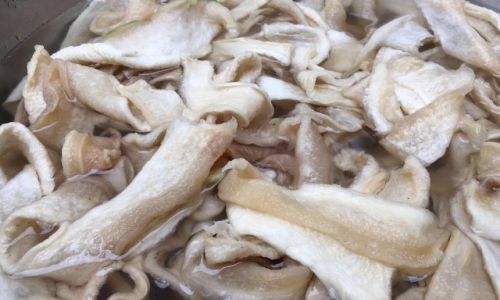
Mushrooms should crack when bent. Overdried pieces will crumble; underdried ones will flex.
-
Storage:
Cool completely before packaging.
Pros and Cons:
- Pros: Energy-efficient, minimal supervision, retains nutrients.
- Cons: Initial equipment cost, limited to dehydrator capacity.
Method 4: Air Drying (Hanging)
Air drying, or “hang drying,” utilizes ambient airflow in low-humidity environments. This method is ideal for small batches or regions with arid climates.
Ideal Conditions:
- Humidity: Below 40%.
- Temperature: 70–80°F (21–27°C).
- Ventilation: Cross-breezes from windows or fans.
Step-by-Step Guide:
-
Preparation:
- Clean mushrooms and thread them onto string or dental floss using a needle. Leave ½-inch gaps between pieces.
- Alternatively, arrange slices on mesh screens placed in a well-ventilated room.
-
Drying:
- Hang bundles or screens in a dry, shaded area (e.g., attic, garage).
- Use fans to enhance airflow if needed.
- Total drying time: 7–14 days.
-
Completion Test:
Mushrooms should feel dry and brittle.
-
Storage:
Store in airtight containers once fully dried.
Pros and Cons:
- Pros: Energy-free, low maintenance.
- Cons: Slow, susceptible to dust/pests, climate-dependent.
Storage Best Practices
Proper storage is critical to maintaining dried mushrooms’ quality. Follow these guidelines:
- Containers: Use glass jars with tight-fitting lids, vacuum-sealed bags, or airtight plastic containers. Avoid cardboard or paper bags, which absorb moisture.
- Location: Store in a cool, dark place (e.g., pantry, basement). Light and heat degrade flavor and nutrients.
- Labeling: Date containers and note the drying method for reference.
- Inspection: Check for condensation or mold every 3–6 months. If moisture appears, re-dry mushrooms immediately.
Rehydration Techniques
Rehydrating dried white jade mushrooms restores their texture and unlocks their flavor. Follow these steps:
-
Cold Water Soak:
- Place mushrooms in a bowl and cover with cold water. Soak for 2–4 hours, or until pliable.
- Reserve the soaking liquid—it’s rich in flavor and can be added to soups or sauces.
-
Hot Water Soak:
Submerge mushrooms in boiling water for 15–30 minutes. Drain and pat dry.
-
Quick Simmer:
Add dried mushrooms to simmering broth or water for 10–15 minutes.
Culinary Applications
Rehydrated white jade mushrooms retain their delicate crunch and earthy sweetness, making them ideal for:
- Stir-Fries: Add to vegetables and proteins during the final minutes of cooking.
- Soups: Simmer in broths for depth of flavor.
- Risottos: Incorporate during the last stage of cooking for texture contrast.
- Stuffings: Mix with breadcrumbs, herbs, and cheese for a savory filling.
Troubleshooting Common Issues
-
Mushy Texture Post-Drying:
- Cause: Incomplete drying or high humidity during storage.
- Solution: Re-dry mushrooms at a lower temperature or use a dehumidifier in storage areas.
-
Mold Growth:
- Cause: Excess moisture or contaminated storage containers.
- Solution: Discard affected mushrooms and sanitize containers before reuse.
-
Bland Flavor:
- Cause: Overheating during drying or prolonged storage.
- Solution: Use dried mushrooms within 6 months for optimal taste.
Conclusion
Drying white jade mushrooms is a rewarding process that transforms a perishable delicacy into a pantry staple. By mastering techniques like sun drying, oven drying, dehydrator use, and air drying, you can enjoy their unique flavor and texture year-round. Remember to prioritize uniformity in slicing, monitor drying conditions diligently, and store the finished product in airtight containers away from light and heat. Whether added to a hearty stew or a vibrant salad, dried white jade mushrooms offer a gourmet touch that bridges seasons and elevates everyday meals. Experiment with these methods, and soon you’ll discover the joy of preserving nature’s bounty one mushroom at a time.

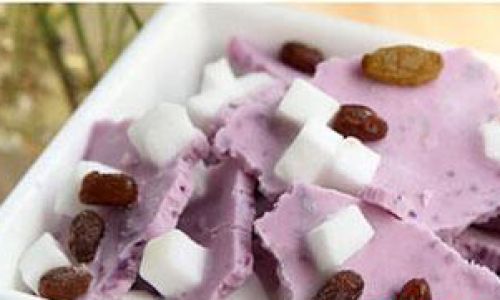

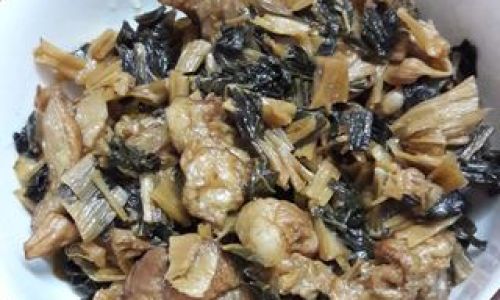
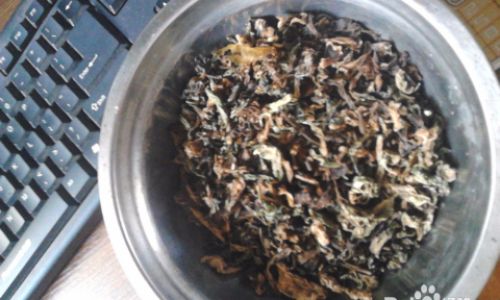
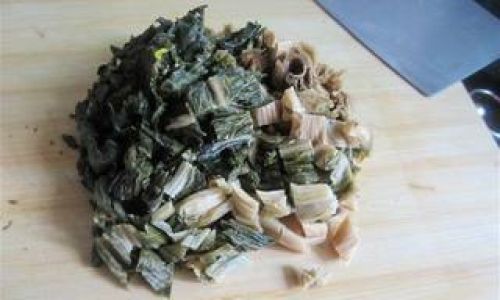
0 comments